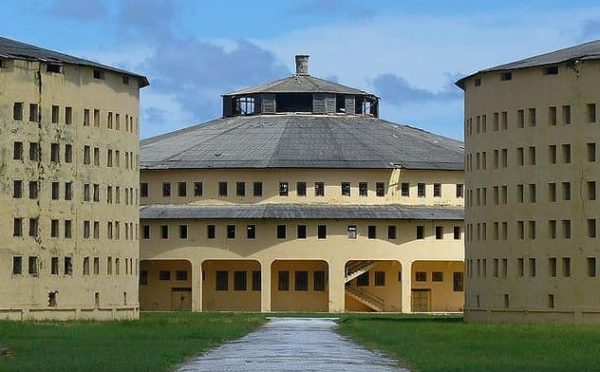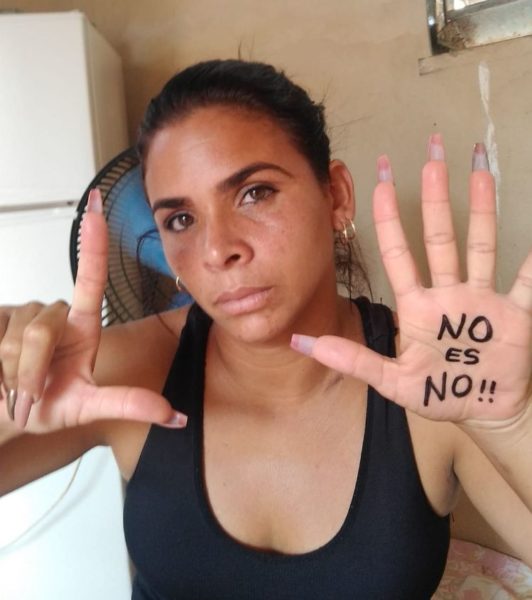The Isle of Pines is Once Again Cuba’s Siberia

By Vicente Morin Aguado
HAVANA TIMES – A nuclear submarine from Vladimir Putin has just anchored in the Port of Havana. Far from the debates caused by the Russian military presence in the Caribbean, history takes us back to the 19th century. On the southern coast of our country, the small Isle of Pines was turned into a place of confinement for freedom fighters. At that time, the repressive Spanish practices earned it the nickname of Cuba’s Siberia.
In 1978, as part of one of the regime’s typical propaganda operations, the island territory was renamed the Isle of Youth. Fidel Castro promised to erase forever its past as a prison island. Now, the news is that the past has been revived.
Lizandra Gongora Espinosa, a prisoner of conscience sentenced to 14 years, has been taken to the island, being confined in the Los Colonos women’s prison.
Lizandra was arrested 18 days after the protests of July 11, 2021, resulting from a fierce police persecution, as if she were a serial killer or a drug trafficker. Police, special troops, and paramilitaries organized by the so-called Committees for the Defense of the Revolution obeyed a combat order dictated on that date by the country’s president, Miguel Diaz-Canel.
It was the response of the Head of State to tens of thousands of demonstrators who lost the fear imposed by decades of repression, shouting “Patria y Vida” (Homeland and Life) in about 50 cities across the country. Nothing similar had ever happened since 1959. The result is 1,113 political prisoners as of the end of May, documented by www.prisonersdefenders.org.
A mother of five children, at 35 years old, Lisandra was tried by a military court, accused of Public Disorder, Disrespect, and Sabotage. Guilty in advance in a country where justice is subject to the sole ruling communist party. The sentence was ratified by the corresponding chamber of the Supreme Court, with the additional sanction of sending her to the remote corner constituted by the Isle of Pines territory.

A photograph shows how dangerous Lizandra is to the dictatorship’s efficient repressive apparatus. In the palm of her right hand, she wrote the phrase “No means No”. The reasons associated with such a Spartan expression were published by the independent web portal ADN Cuba, recorded clandestinely extracted from the prison:
“They sentenced me to a long sentence. I am very sad because I miss my ‘mambisitos’ [children], but I do not feel defeated, much less vanquished. My principles and my political position are non-negotiable. I will not bow my head or bend my knees in the face of so much injustice and corruption” by “the Castros” and the designated president Miguel Diaz-Canel.”
Mambisitos is the diminutive of Mambí, the name given by the Spanish authorities to the Cubans who fought for freedom from 1868 for 30 years. Many of these Mambises suffered imprisonment and deportation to the Isle of Pines. The patriots considered themselves honored to be called that.
The Spanish initiative continued during the Republic proclaimed in 1902. A dictator named Gerardo Machado decided to create on the southern isle what was called the Model Prison, inaugurated in 1926, with a capacity for six thousand inmates, copying the panoptic architecture of Joliet in Illinois, United States.
The condition of island prison lasted until 1967. In addition to so-called common prisoners, it housed opponents of three dictatorships: Machado from 1928 to 1933, Batista from 1952 to 1959, and Fidel Castro until the facility’s closure in 1967.
Confining opponents to insularity has evident political advantages: it diminishes the impact of any protest, facilitates the impunity of prison guards, and hinders the few visits granted to the convict’s family members.
This strategy was practiced by Spain around 1860, as recounted in one of his vignettes by the philosopher, educator, and journalist Jose de la Luz y Caballero: “A man asked the coachman: How do you get to the Isle of Pines, Cuba’s Siberia? Answer: Those they don’t kill here, end up being killed there.”
Of the 119 women imprisoned in Cuba for political crimes, the highest confirmed sentence is Lizandra Gongora’s, subjected to a slow death due to a lack of adequate medical attention, the direct responsibility of the Cuban State Security and the military Prosecutor’s Office. They are ones who determine the prison regime for a convict sentenced by military courts, inexplicable because the country is not in a state of war.
A solitary political prisoner, her husband Angel Delgado, the only person allowed to visit her, tells us in a direct interview: “She has a 5-centimeter fibroid, which by nature continues to grow if not operated on. This causes vaginal bleeding and severe abdominal pain.”
I asked: “Have they taken her to the hospital?” and the husband replies: “She started bleeding, and that’s when they admitted her. They returned her to prison because they didn’t give her any treatment. Lizandra told me that the doctor said: ‘there are no supplies here, there is no specialist to perform that kind of operation, and there is a list of 1,300 people waiting for operations.’ Lizandra responded: ‘What are you going to wait for, for me to die!'”
The inhumane prison conditions are aggravated by knowing that the prisoner has a sickle cell trait.
Lizandra Gongora Espinosa is in danger of death, surviving semi-drugged with painkillers acquired on the informal market by her husband. She has not undergone the medical examinations appropriate to her initial diagnosis.






This to me is outright murder, plain and simple and no one will be held accountable, my only hope is that “Karma” will step in and even the score.